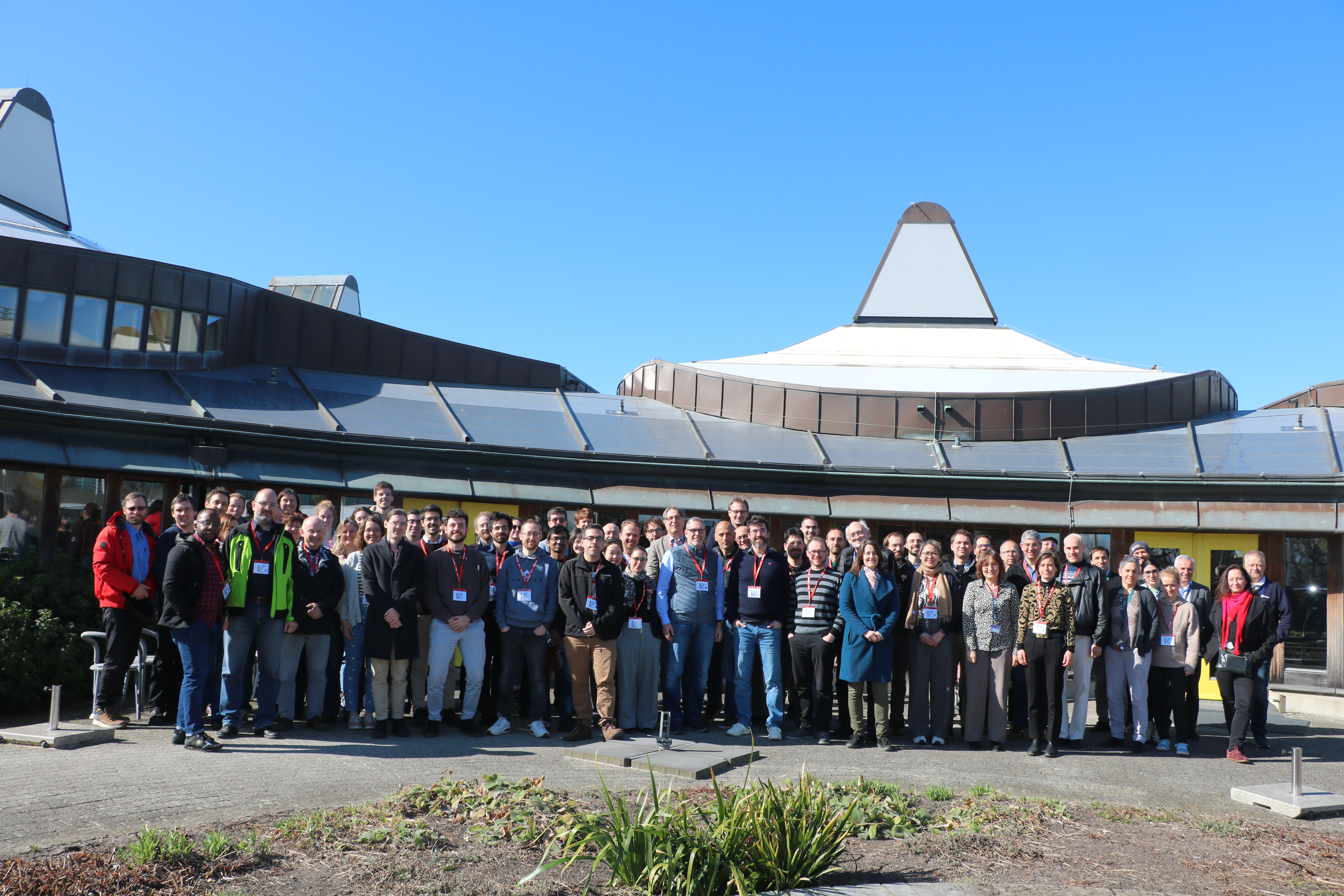Science Results - CHEOPS
Science Results
Celebrating Five Years of CHEOPS Science Operations: Unveiling the Mysteries of Exoplanets
The Characterising Exoplanet Satellite (CHEOPS) has achieved yet another significant milestone, as the team celebrates the fifth anniversary of the mission’s science operations. The spacecraft was launched on 18 December 2019, and after only a few months in early operations and commissioning phase, it passed the in-orbit commissioning review. This event on 24 March 2020 gave the formal green light to commence science operations. Since then, CHEOPS has been at the forefront of exoplanet research, providing unprecedented insights into the characteristics and behaviours of planets beyond our solar system.
A Journey of Discovery
Over the past five years, CHEOPS has helped to revolutionise our understanding of exoplanets. By precisely measuring the sizes of known exoplanets via observing their transits in front of their host stars, CHEOPS has enabled scientists to determine their bulk densities and potential compositions with remarkable accuracy. This wealth of data has been instrumental in unveiling systems with multiple planets in harmonic resonances, finding previously unseen exoplanets on long orbits, identifying atmospheric phenomena, and understanding the diversity of planetary systems as a whole.
Science Highlights
- Unveiling the secrets of hot Jupiters: CHEOPS has provided detailed observations of gas giants on extremely short orbits of just a few days, whose high temperatures and gravity-driven distortion have revealed their atmospheric patterns and unique characteristics through transit shape, eclipse, and phase curve analyses. This included worlds like the mission's first study of the ultra-hot Jupiter WASP-189 b or the rugby ball-shaped gas giant WASP-103 b.
- Characterising super-Earths and mini-Neptunes: The mission has significantly advanced our knowledge of small worlds that have no counterparts in our Solar System. For example, by shedding light on rare planetary configurations in harmonic orbits that allow us to test existing theories about planetary formation and migration, such as for TOI-178 and HD110067, or with the 100-day period “photobomber” Nu2 Lupi d.
- Exploring the diversity of exoplanetary systems: Throughout, CHEOPS has observed a wide variety of exoplanetary systems, highlighting the incredible range of possible planets in our galaxy and offering clues about their similarities and differences to our Solar System neighbours. Some of these puzzling discoveries include LTT9779 b, a scorching exoplanet that acts like a mirror; and the first-ever hints of ‘glory’ on the hellish distant world WASP-76 b, an effect otherwise only known from Venus.
- Collaborative spirit: Working in synergy with other space missions and ground-based observatories, CHEOPS has contributed to numerous collaborative discoveries, uniting scientists worldwide. Some of these even went well beyond the field of exoplanets. For example, CHEOPS took a break from exoplanet observations to help follow up a system monitored by amateur astronomers, citizen scientists, and other telescopes, finding an unexpected ring structure around the trans-Neptunian object Quaoar in our Solar System.
Your research with CHEOPS?
The European Space Agency (ESA) runs annual Announcements of Opportunity for the CHEOPS Guest Observers Programme in addition to a Discretionary Programme. These opportunities are open to the worldwide scientific community and all reserarch topics applicable to CHEOPS are encouraged. CHEOPS offers its Guest Observers space-based ultra-high precision photometry for the observation of exoplanet transits, eclipses, occultations, phase-curves, and more. Science cases may range to exomoons, ring structures, stellar activity, trans-Neptunian objects, and beyond. The timely overlap of several space- and ground-based missions can provide opportunities for synergies with NASA/ESA/CSA JWST, NASA/ESA HST, NASA TESS, ESO ground-based facilities, and more. Users now also profit from a larger sky area, wide selection of free targets, modern zero-installation tools, and a streamlined submission process. The most recent opportunity to submit proposals has just been opened (see AO-6 Call).
Looking Ahead
Celebrating this milestone, the team looks forward to the continued success of CHEOPS in the years to come. The mission's ongoing observations will undoubtedly lead to more groundbreaking discoveries, furthering our quest to understand the cosmos and our place within it. This success is thanks to the hundreds of dedicated scientists, engineers, and collaborators who have made CHEOPS a resounding success. Commencing the first stepping stone of an exoplanet trilogy, with PLATO set to launch in 2026 and Ariel in 2029, here's to a rich future of exploration and discovery!
You can learn more about some of CHEOPS most striking science highlights via our dedicated Media Releases.

Timed nicely with CHEOPS' fifth anniversary of science operations, the Science Team reunited with members of the former Study and Project Teams for a large multi-day meeting at the European Space Research and Technology Centre (ESTEC) in March 2025.
This website was last updated on 25 March 2025.








































 Sign in
Sign in
 Science & Technology
Science & Technology